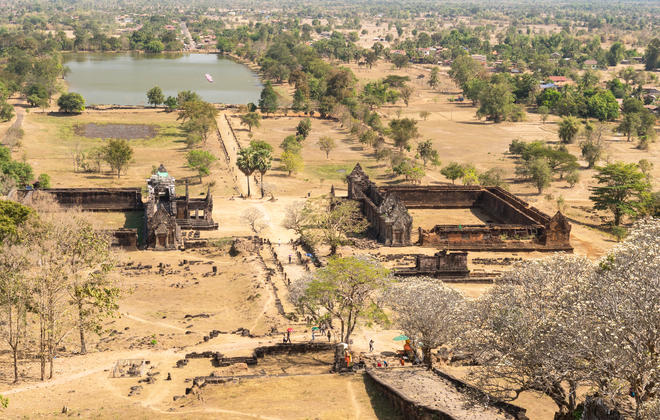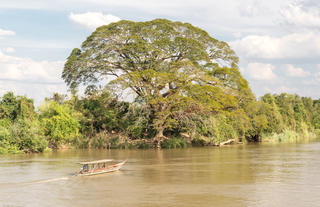Wedged between a number of larger neighbouring countries, Laos is often overlooked in favour of tourism giants such as Thailand and Vietnam. But these travellers are missing out on an extraordinarily scenic and culturally rich destination. Laos boasts a reputation as the least visited, least Westernised, and most untouched of all Indochinese nations. Only time will tell how long this will last, but while it does, visitors who choose to explore this nation’s remote areas will be richly rewarded. Laos’ primary drawcard is undoubtedly the mighty Mekong River which traverses the length of the country and is considered the second most biodiverse river in the world. In the north, the landscape is characterised by little-explored jungle-clad mountainous areas where visitors can witness the intriguing cultures of the various hill tribes that populate this region. Travellers on the hunt for cultural interest should head for the bustling capital of Vientiane, with its innumerable temples and Buddhist monuments. It is this variety of exotic wildlife, remote wilderness and remarkable cultural treasures that make Laos a truly unique and unforgettable holiday destination.
ViVientiane, the capital and largest city of Laos, offers a refreshing contrast to many Southeast Asian capitals—uncrowded, unhurried and imbued with a gentle, understated elegance. Set along the Mekong River, the city blends leafy boulevards, serene temples and evocative French-era architecture with a relaxed riverside lifestyle. Its spiritual heart is Pha That Luang, the nation’s most revered monument, a radiant 16th-century golden stupa symbolising Lao identity and Buddhist devotion. Travellers can wander between pavement cafés, atmospheric night markets and riverside restaurants, all of which reflect the city’s famously tranquil rhythm. Cultural highlights include the Laos National Museum, where thoughtfully curated exhibits trace the country’s long and complex history. With its calm disposition, historic charm and warm hospitality, Vientiane offers a captivating introduction to the soul of Laos.




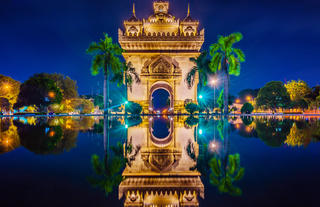
Phonsavan serves as the gateway to one of Laos’s most mysterious and compelling archaeological wonders: the Plain of Jars. Spread across hundreds of square kilometres of rolling hills, this vast landscape is dotted with thousands of ancient stone jars—some towering up to three metres high—believed to be at least 1,500 years old. Their true purpose remains an enigma: scholars have suggested funerary urns or burial chambers, while local folklore imagines them as places where lovers sealed their union. The town of Phonsavan itself carries an old-world atmosphere, shaped largely by architecture built in the mid-1970s following the end of the Vietnam War. A visit to the area’s two UXO information centres provides a thought-provoking and sobering glimpse into the region’s wartime history, adding depth and context to a stay in this quietly intriguing corner of Laos.

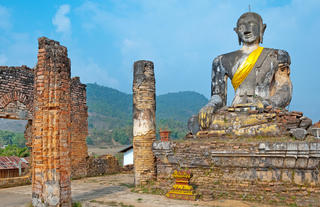
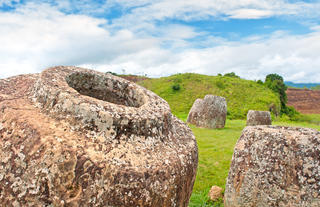
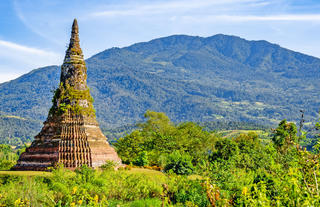
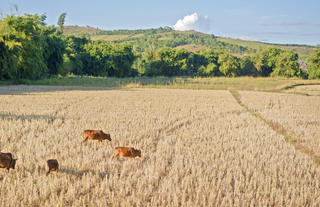
Remote and peaceful, Xam Neua is the capital of Laos’ northeastern Hua Phan Province, set in a verdant valley surrounded by emerald green rice paddies and mountainous rainforests. It is rarely visited by travellers and, as such, has retained its cultural authenticity and old-world ambience. It is famous for its exquisitely crafted fabrics, as well as its pivotal history: The area was a stronghold of communist Pathet Lao forces during the Second Indochina War, from the mid-1960s to mid-1970s. Among the most prominent area attractions are the Vieng Xai caves, which served as a refuge for some 20 000 Pathet Lao officers, soldiers and supporters during this time. There’s also a lovely waterfall off the road between Xam Neua and Vieng Xai, and the mysterious Hintang archeological site, where collections of spindly vertical stone pillars reaching up to 3m high are interspersed with ancient burial sites, forming a kind of Asian Stonehenge.





Wedged between a number of larger neighbouring countries, Laos is often overlooked in favour of tourism giants such as Thailand and Vietnam. But these travellers are missing out on an extraordinarily scenic and culturally rich destination. Laos boasts a reputation as the least visited, least Westernised, and most untouched of all Indochinese nations. Only time will tell how long this will last, but while it does, visitors who choose to explore this nation’s remote areas will be richly rewarded. Laos’ primary drawcard is undoubtedly the mighty Mekong River which traverses the length of the country and is considered the second most biodiverse river in the world. In the north, the landscape is characterised by little-explored jungle-clad mountainous areas where visitors can witness the intriguing cultures of the various hill tribes that populate this region. Travellers on the hunt for cultural interest should head for the bustling capital of Vientiane, with its innumerable temples and Buddhist monuments. It is this variety of exotic wildlife, remote wilderness and remarkable cultural treasures that make Laos a truly unique and unforgettable holiday destination.





Set amid dramatic limestone cliffs along the serene Ou River, Nong Khiaw is a picturesque riverside town that invites travellers to slow down and linger for days. Verdant jungle trails lead to remote hill-tribe villages where traditional dress and time-honoured customs remain part of daily life, while bamboo-raft trips down the river reveal sweeping views of lush mountains and quiet rural scenes. A short, scenic 2-kilometre walk takes visitors to the historic Pha Tok Caves, once a refuge for Pathet Lao soldiers during the Second Indochina War. After a day of exploring, the town’s simple spas offer soothing steam baths and traditional massages—an ideal way to unwind as sunset settles over the cliffs. Rugged, peaceful and visually spectacular, Nong Khiaw is one of northern Laos’s most captivating small-town escapes.
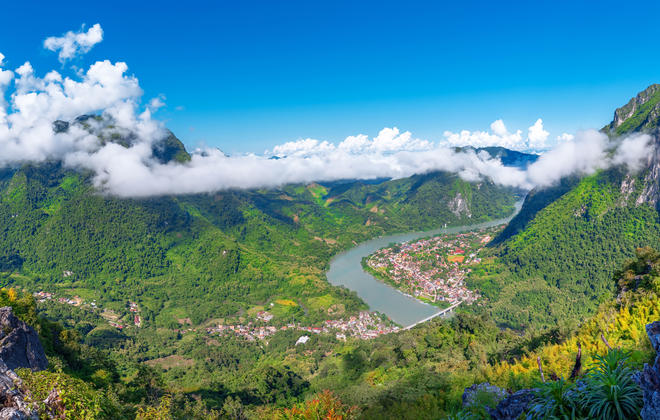

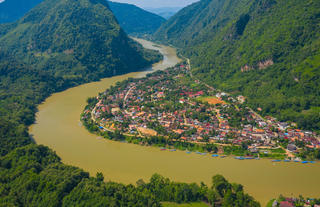
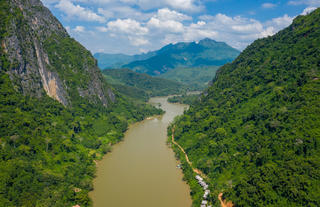
A charming town with elegant historical architecture and a distinctly French flavour, Luang Prabang in northern Laos is filled with interesting museums, bustling markets and traditional shops. 33 Buddhist temples dot the city.; the Haw Kham Royal Palace Museum and Wat Xieng Thong temple give travellers some background on and history of the Laotian people. Beyond the city, breathtaking nature and ancient sites await. Those who visit the Pak Ou Caves can see hundreds of Buddha statues accumulated there through the ages. The 180-foot Kuang Si Waterfalls, an hour’s drive out of the city, is one of the region’s natural highlights, with its layer upon cascading layer of turquoise pools and torrents.
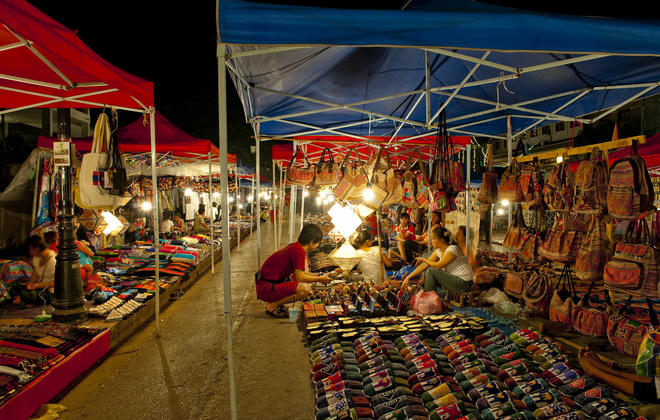




Once a commanding power in the Mekong River basin, Champasak has evolved into a tranquil province best known for its serene landscapes, ancient heritage and the beguiling Si Phan Don (4,000 Islands) archipelago. Its namesake town, Champasak, is a peaceful riverside settlement graced with French colonial buildings, shimmering Buddhist temples and a slow, timeless rhythm. The province’s crown jewel is Wat Phu, an evocative pre-Angkorian Khmer temple complex and UNESCO World Heritage Site dating back to at least the 5th century. A fragrant frangipani-lined stone stairway leads to its upper sanctuary, rewarding visitors with sweeping views over the surrounding plains and the remnants of this ancient spiritual centre. Beyond its archaeology, Champasak is a paradise for adventure seekers and nature lovers alike, with 178 named mountains, vast protected areas and riverine landscapes offering endless opportunities for exploration.
